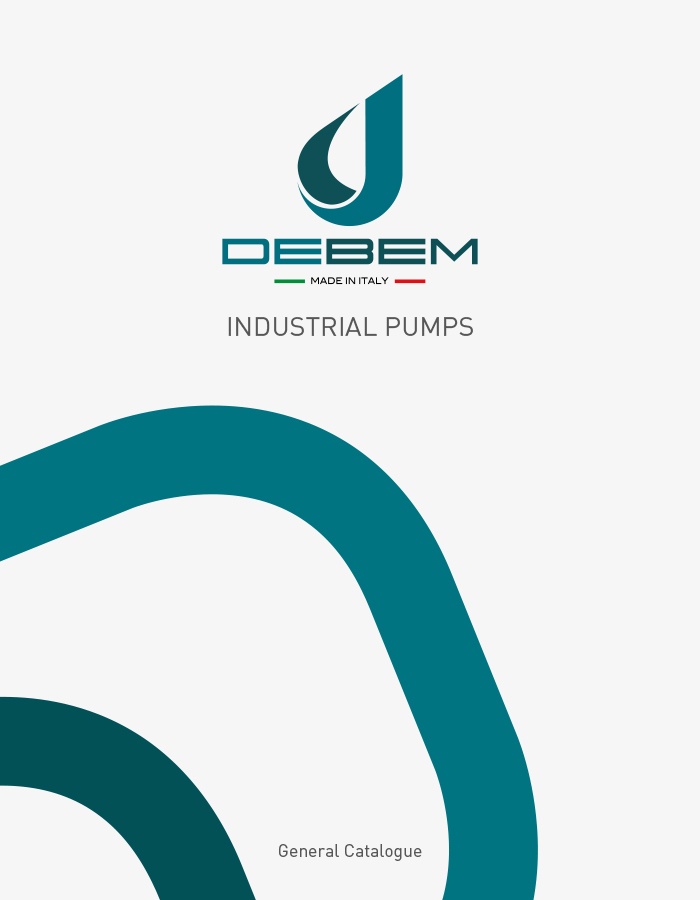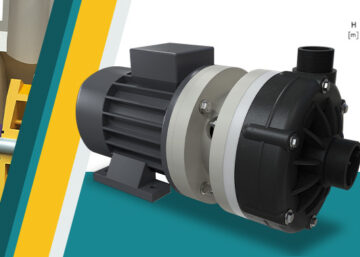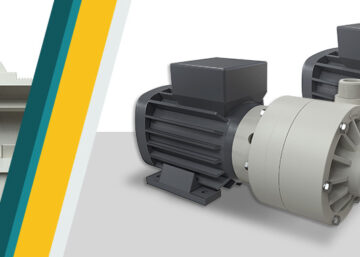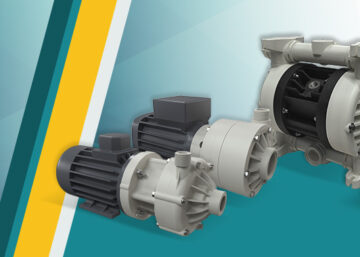Debem double diaphragm pumps enable to achieve high efficiency and reliability in terms of performance even under unfavourable environmental conditions. The simple but effective operating principle combined with the quality of the construction materials makes them a versatile solution that can be used in various application sectors. In order to further optimise the performance of this type of pump, it is required to know which factors are to be taken into account when selecting the construction material most suitable for the specific usage characteristics.
Selecting the most suitable construction material, especially in critical contexts of use, is crucial to achieve optimal operating performance and increasing the benefits of the solution. This article, following a brief presentation of the double diaphragm pumps, will cover the factors that affect the choice of material and the solutions offered by Debem to increase pump reliability and performance.
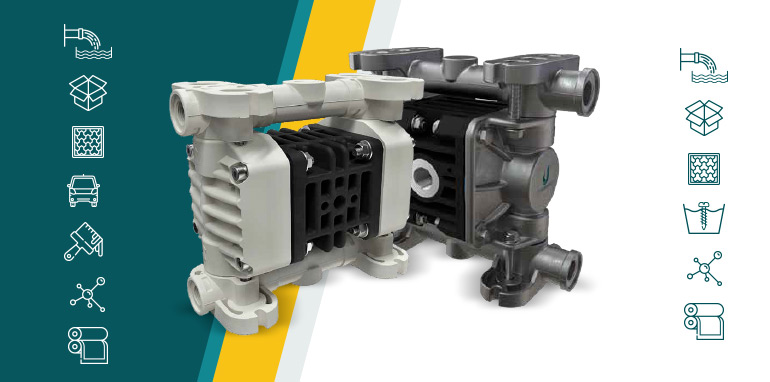
OPERATING PRINCIPLES AND APPLICATION ADVANTAGES
Compressed air diaphragm pumps, also known as double diaphragm pumps, are characterised by a self-priming operating principle. They provide the option to control the desired fluid flow rate by adjusting the volume of air that feeds the pneumatic motor. The particular operation of the double diaphragm pumps combined with the configuration and design characteristics brings the following application advantages within reach:
- Reliability and stability of pumping conditions
- Low air consumption volume
- Reduction of maintenance costs deriving from particular operating characteristics
- Ease of installation and flexibility when customising for different application needs.
The particular construction configuration, thanks to the reinforcing support provided by the diaphragm, preserves the contact of liquids with the pneumatic mechanisms of the pump. This way the diaphragm pump can be used to pump and transport contaminated, aggressive fluids or highly viscous liquids or those with suspended elements.
FACTORS WHEN SELECTING THE CONSTRUCTION MATERIALS OF DOUBLE DIAPHRAGM PUMPS
The factors that affect the choice of material for a type of pump generally involve the following key aspects.

Degree of chemical compatibility with the fluid pumped and transported by the pump. The transfer or coming into contact with abrasive, chemically aggressive or flammable substances requires particular attention when picking the material in order to increase the efficiency and lifespan of the pump.

Degree of resistance to abrasion always deriving from the type of fluids processed by the pump. In this case it is crucial to choose the most suitable material in order to preserve the pump from premature wear of its components.

Temperature ranges: the temperature of the transported fluid affects operating flexibility at low temperature conditions and the resistance to deterioration in case of use at high temperatures.

Installation contexts: the environmental conditions of installation require to select the proper material in order to protect the pump from any weathering (sunlight, cold, etc.). Furthermore, the application context may influence the choice of a lighter pump for example in case of transportable applications.

Particular certification standards: which require the use of a certain type of certified pump for specific application contexts. In this case the choice of material will be determined by the actual availability of the material for the type of certified pump.

Cost Driver: the last factor, but no less important, is represented by the cost driver which certainly affects the choice of a specific material. Often the savings resulting choosing a cheaper material are nullified by the premature wear of the pump or by the amount of plant downtimes. In this case, given the large number of variables involved, it is recommended to rely on the advice of an expert. In this case, the DEBEM sales team can provide specific advice to optimise the profitability of the investment throughout the product life cycle.
THE CONSTRUCTION MATERIALS OF
Debem industrial pumps are designed and manufactured with a wide variety of materials in order to ensure a solution suitable for the reference application context. The two main types of materials that classify Debem Pumps are the following.
DEBEM PUMPS METALLIC MATERIALS
The metallic materials are Stainless steel and Aluminium, especially suitable for pumps used to pump and transport abrasive fluids, slurry, paints, inks, oils (even in case of solid processing residues), food and pharmaceutical fluids, glues, slip, biodiesel and for the construction industry, oil & gas, mines.
DEBEM PUMPS PLASTIC MATERIALS
Plastic materials: Polypropylene with glass filler, Polypropylene with carbon filler, PVDF, which allow a degree of chemical compatibility with even highly aggressive fluids, both strongly acidic and basic, dyes for fabrics, chemical reagents, industrial detergents.
ATEX – IECEX CERTIFIED DEBEM PUMPS
Pumps designed for use in areas with a potential explosive hazard. All the plastics of these pumps are filled with carbon FIBRE to increase their conductivity level, preventing any electrostatic discharges from being generated. Be wary of imitations! Given the critical importance of using a pump in ATEX areas, make sure that the quality of the carbon fibre is of a high level. Debem ensures a conductivity of 100%, while the competition instead uses carbon powder and NOT fibre. Therefore the plastic is not actually 100% conductive. These pumps may cost less, but they are potentially dangerous and do not comply with the regulations.



